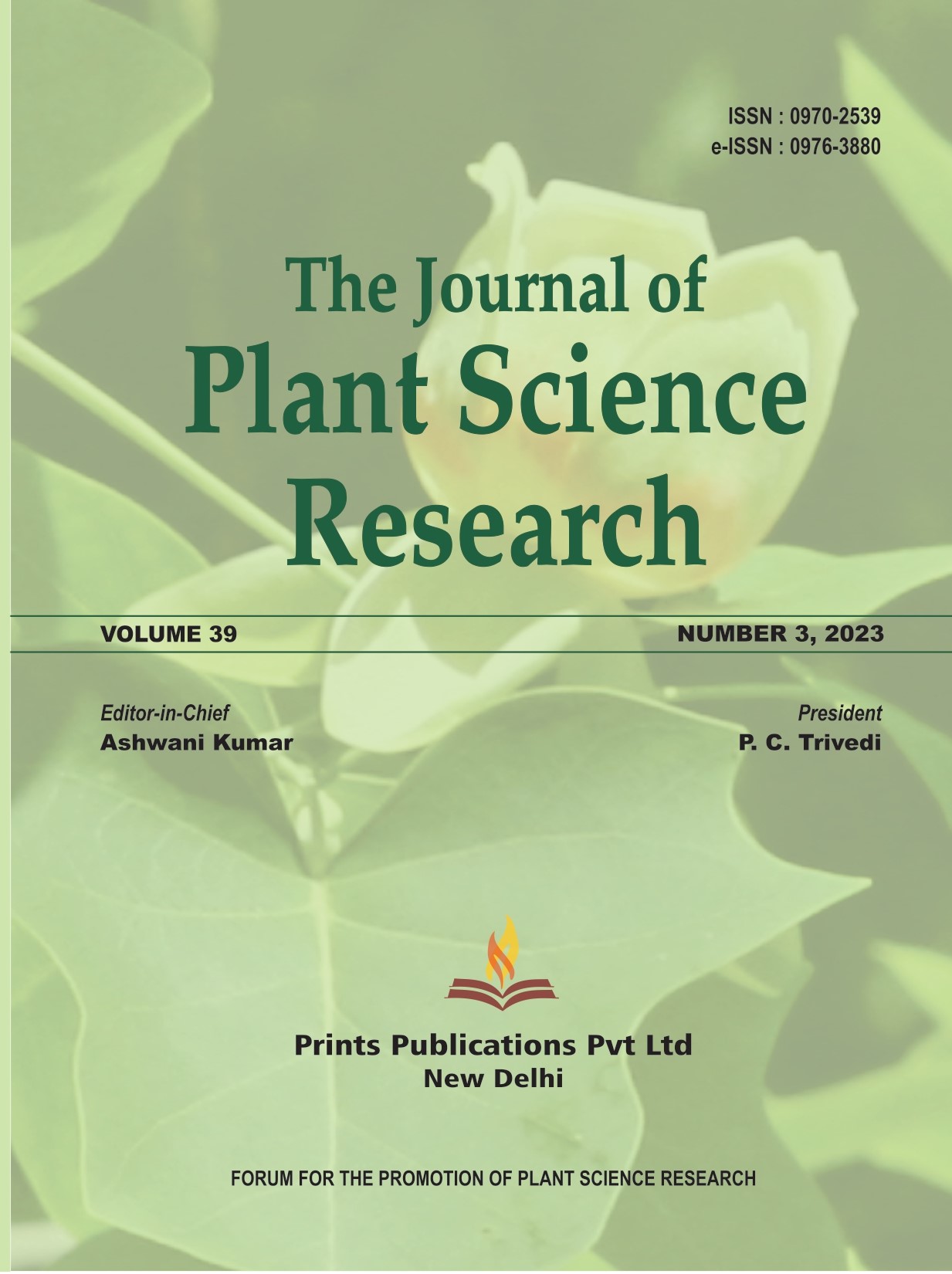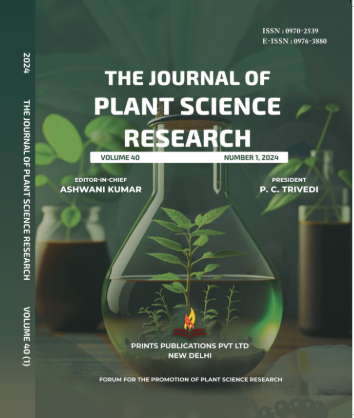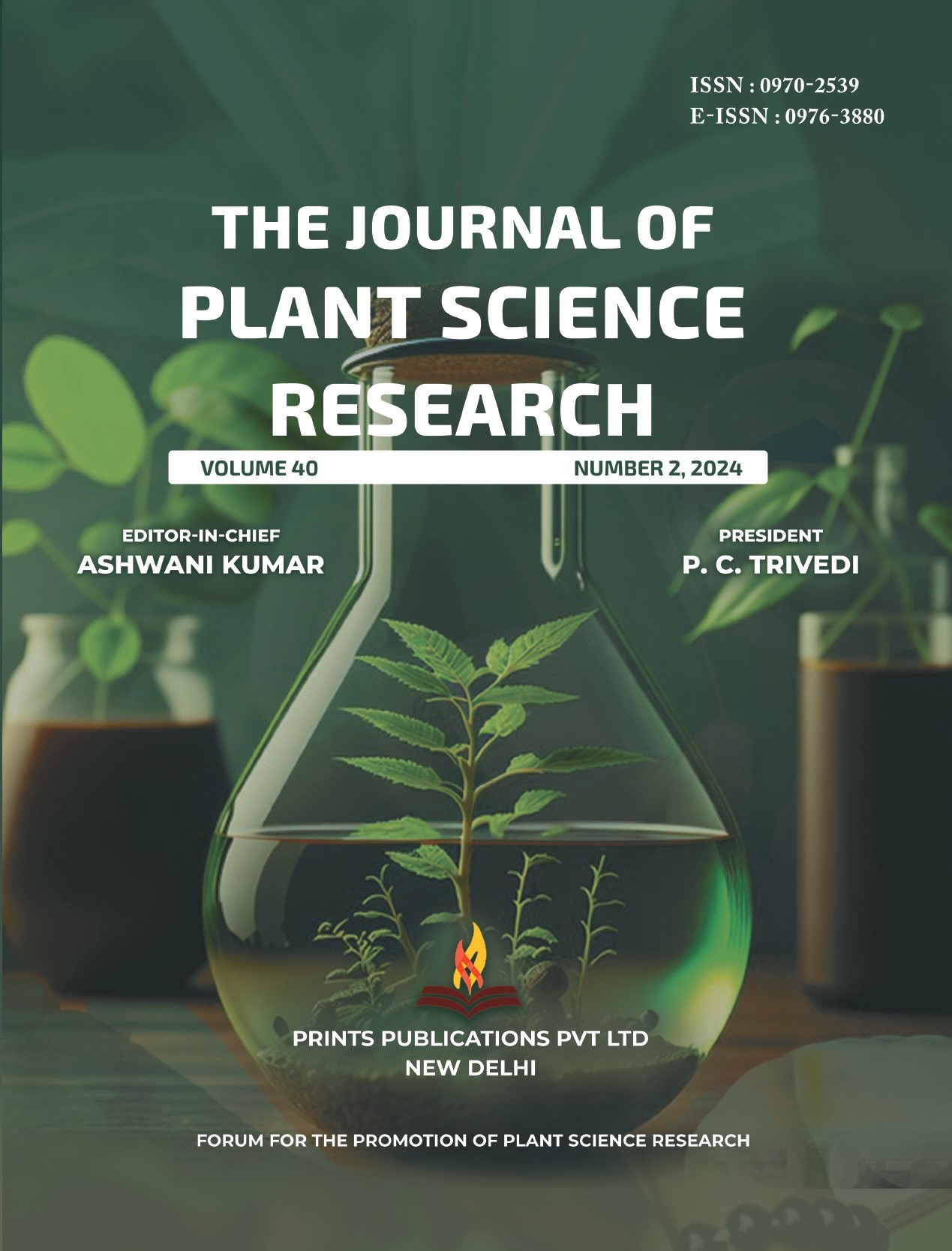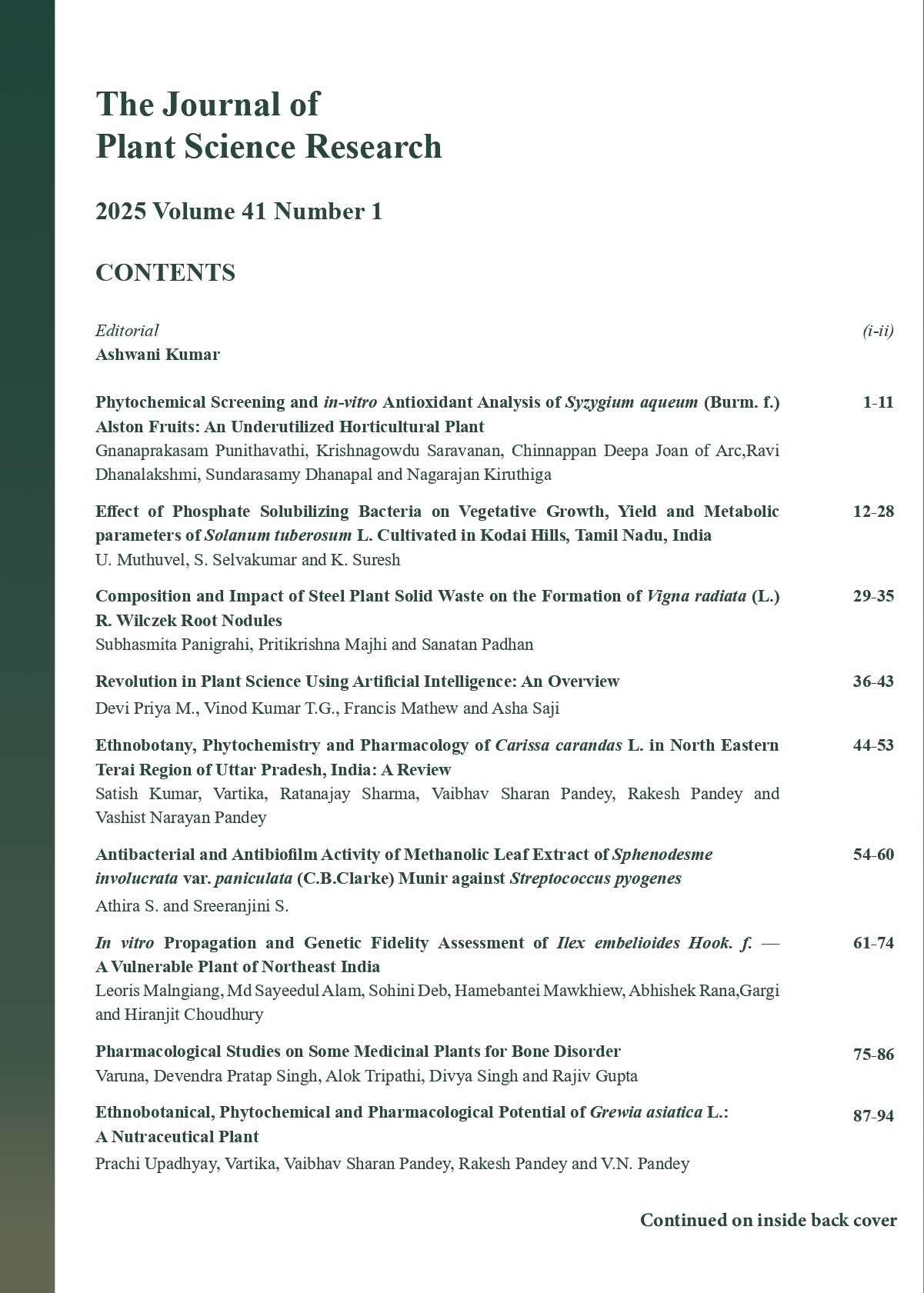The Journal of Plant Science Research - A UGC Care-Listed Journal
Published in Association with Forum For the Promotion of Plant Science Research
Current Volume: 41 (2025 )
ISSN: 0970-2539
e-ISSN: 0976-3880
Periodicity: Tri-annual
Month(s) of Publication: April, August & December
Subject: Botany
DOI: 10.32381/JPSR
Online Access is Free for Life Member
Study on Secondary Metabolites of Some Ethnomedicinally Important Plants of Murshidabad District, West Bengal, India
By : Asim Mandal, Sandip More, Mithun Biswas, Sutibra Narayan Mondal, Souhardya Ray, Supriti Ghosh
Page No: 137-143
Abstract
Plant kingdom have enormous chemicals contained in them. From the very ancient time till nowadays, people utilize these medicinal properties of plants, for the treatment of many diseases. Traditional medical sciences like Ayurveda, Unani, and traditional manuscripts provide us with the knowledge of how different plant parts are used for the treatment of various diseases. Ethnic groups and indigenous people of rural Murshidabad district and West Bengal use these ethnomedicinally important plants for treatment. The information about the importance of medicinal plants is transferred from generation to generation since ancient times. The aim is to screen out the different secondary metabolites present in each of the samples. Secondary metabolites are not primarily used during the life cycle of plants but used for their defense or other activities. These secondary metabolites have several beneficial aspects on human health. The secondary metabolites which are screened out mainly from the angiosperm families, which are abundant in Murshidabad district. Out of 25 species of angiosperms 10 species are encountered in the Murshidabad district, West Bengal, India. The plant samples are collected from the different localities and different parts are used, and extraction is done by organic solvents and distilled water. The extracted samples are then used for the screening of the secondary metabolites. Secondary metabolites screened out from these 10 species are Tannins, Phenolics, Alkaloids, and certain Glycosylated forms. These secondary metabolites have been reported to have various health benefits like antiseptic, analgesic, nervous system regulation, antioxidant properties, hypoglycemic, and immunomodulatory activities.
Authors :
Asim Mandal, Sandip More and Mithun Biswas : Assistant Professor, Department of Botany, Krishnath College, West Bengal, India
Sutibra Narayan Mondal, Souhardya Ray and Supriti Ghosh : Department of Botany, Murshidabad University, West Bengal, India.
DOI: https://doi.org/10.32381/JPSR.2023.39.03.14






